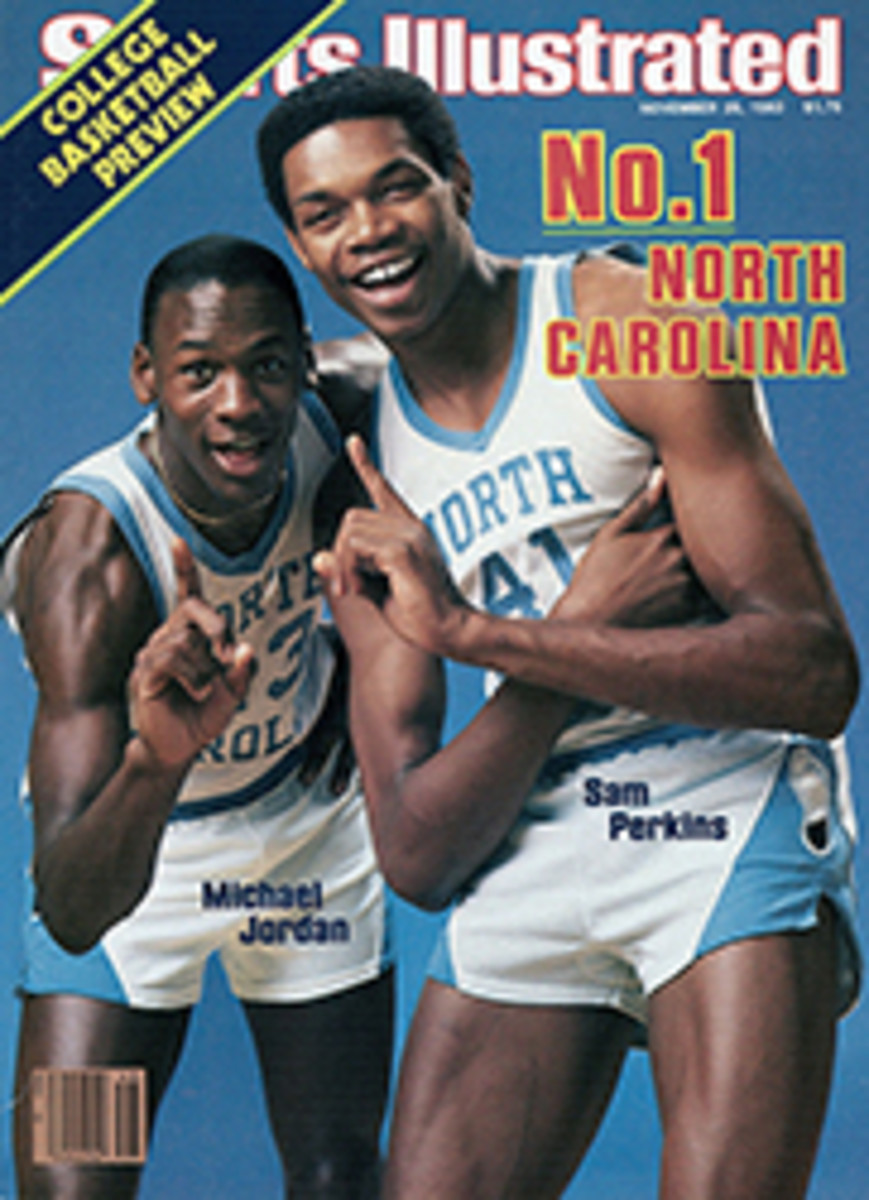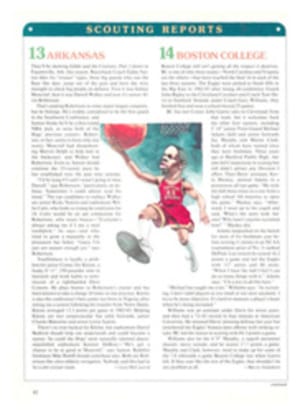
She turns rabbits into rocks
In single file the skiers charge through the pines on a mountainside near West Yellowstone, Mont., arms and legs pumping rhythmically; the only sounds are the labored breathing of the athletes and the hiss of skis through new snow. One by one, as the skiers reach a clearing, they stop, unstrap rifles from their backs and take aim at targets 50 meters away. A small woman bundled in a red parka stands behind the firing line observing the riflemen. "O.K., breathe," she mutters to herself. "Breathe again. Now take a deep breath...exhale slowly...." A shot echoes through the clearing, then another and another.
The woman is Marie Alkire, 45, the shooting coach of the U.S. biathlon team. One of the least understood of Winter Olympic sports, biathlon is that exotic hybrid in which cross-country skiers periodically interrupt their racing to shoot at small targets. The difficult part of the sport consists not of skiing fast or shooting well, but of doing both in concert. Says Alkire, "Try sprinting full out around the neighborhood track, then stopping to thread a needle."
It is the job of Alkire and the team's skiing coach, Ken Alligood of Anchorage, Alaska, to teach gasping U.S. biathletes how to thread that needle successfully for February's Winter Games in Sarajevo. The 29 members of the American team are now in training at the village of West Yellowstone, 80 miles south of Bozeman, skiing, shooting, running, lifting weights and generally getting in shape for six races in December and the Olympic Trials at Lake Placid in early January. Alligood, a former Army biathlete, works on the athletes' skiing style and teaches them how to control their breathing while racing, so that they'll arrive at the range ready to shoot. There Alkire awaits them. "I watch for small things that are part of the integrated act of firing a shot," she says. "The trigger pull, and the breathing—its pattern and rhythm. When they come in we have them breathe a little bit deeper prior to shooting, then take two or three breaths per shot. There's an inhale and a slow exhale, with the shot at the end of the exhale."
Alkire has an unusual background for a biathlon coach. "I grew up in Kansas," Alkire says. "I've never really lived where you can ski." So she did things little girls in Kansas do, like shoot. Her father, Robert D. Thompson, coached Marie and her sister, now Margaret Murdock, in marksmanship. Margaret joined the Army and became one of the world's premier shooters, winning a silver medal in riflery at the 1976 Olympics. Marie became national Women's Air Rifle Champion in 1975, served as the U.S. shooting team's manager in the late '70s and coached in the National Rifle Association's Junior Olympics program. When the biathlon team went looking for a shooting coach two years ago, there stood Alkire, experienced and loaded for bear.
"I had never been on cross-country skis before," Alkire says. "On our first training trip to West Yellowstone, they had an extra pair, so I tried them. It was fun, but I learned quickly that it was my job to be at the range. I still only ski when we've got spare time, which isn't often."
Another new experience for Alkire was losing. "The U.S. shooting team was always on top," she says. "We've been winning gold in riflery in the Olympics since 1964. So it was tough to go to Russia last year for the World Biathlon Championships and get our butts kicked. I'm used to always beating the Russians."
Perhaps so, but realistically the U.S. biathlon team stands little chance of beating the Soviets at Sarajevo. An estimated 20,000 athletes participate in biathlons in the U.S.S.R.; the U.S., in contrast, has only 200 active biathletes.
The popularity of the sport in Europe is surprising, because it would not seem to be a game for the masses. It is the sports world's Dr. Jekyll: a thing painfully at odds with itself. In other compound sports, for example the decathlon and pentathlon, events are approached in sequence—the third effort doesn't really affect the fourth, apart from increasing the athlete's fatigue. Not so in biathlon: When the skier glides into the range he starts shooting, and when he has squeezed off five shots he immediately skis on. Says U.S. biathlete Don Nielsen, 32, of Boulder, Colo., "Skiing and shooting is a marriage made in hell. It's a physical contradiction of impossible proportions. Biathlon is turning from a rabbit to a rock and then back again."
In Olympic competition there are two individual events, the 10-and 20-kilometer runs, plus a 30-km relay. In the 20-km race the skier enters the target range four times, shooting a small-bore nonautomatic .22 rifle from the prone position on the first visit, the standing position on the second, then prone, then standing. Targets for upright shooting are 11½ centimeters in diameter; for prone shooting, 4½ cm. Each miss adds a one-minute penalty to the skier's running time. In the 10-km sprint there are only two shooting sessions, and a 150-meter penalty loop must be skied for each miss.
To turn from rabbit to rock, top biathletes begin to decelerate several hundred meters from the shooting range so they can effectively steady their guns. "The best Europeans have their breathing down when they're shooting," says Alkire. "They shoot, breathe once, shoot again, breathe again. Some of my guys are gasping. The Europeans approach it as an entity and start training as biathletes when they're 10 years old. Many of our guys are skiers who just get a gun and off they go."
Still, the U.S. team at Sarajevo should do better than it has in recent years. On good days, Nielsen and Lyle Nelson, 34, of Squaw Valley, Calif., are among the best biathletes that America has ever produced. Peter Hoag, 29, from Minneapolis, and Martin Hagen, 29. of Jackson Hole, Wyo., are veterans hoping to make the Olympic team for a third time. And prospects for the future look promising. Alkire says that her junior-team members are "thinking like biathletes."
What the biathlon team needs now is a different level of financing. The team gets only $62,000 annually from the USOC, plus another $30,000 or so from fund-raising events such as firearms raffles. The money is spread so thin that Alkire must stay in touch with her athletes by mail during the summer because funds are not available for phone calls. One thing would improve the situation dramatically. "If we could medal, it would help so much," says Alkire. "Cross-country skiing was simply a different sport here after Bill Koch medaled." As the now prosperous U.S. ski team has discovered, gold begets gold and silver, silver.
Unfortunately, it would take something of a miracle for the biathlon team to win medals in Sarajevo. In other words, don't hold your breath, Marie.
PHOTO
At the training-camp range in West Yellowstone, Alkire puts a team member on target.
PHOTO
The rock: Hoag shoots from the prone position at a target the size of a half-dollar.
PHOTO
The rabbit: Nelson races on a Montana mountainside.
ILLUSTRATION

